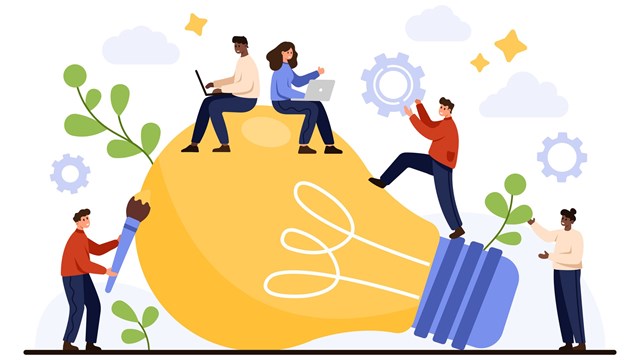Energy is money. And in big co-op apartment or condo buildings, energy is big money—we’re talking thousands upon thousands of dollars in waste...or savings. Most folks know that turning off lights in unoccupied rooms, taking shorter showers, and turning down the thermostat a couple of degrees can help save energy—and by extension, money. Helping an entire building cut costs and reduce its carbon footprint can be a little trickier, however—which is why many co-op and condo buildings hire professional energy consultants to assess their energy profile and make recommendations as to how it might be improved.
It is very important for boards and management to understand what the energy consultants are looking for when assessing their building, and how they work with the boards and managers to suggest and to implement greener, money-saving measures for buildings of every size. There are also legal issues that must be taken into account when dealing with residential buildings in New York City.
Local Laws Enacted
In 2009, former New York City Mayor Michael R. Bloomberg enacted Local Laws 84 and 87 as part of his New York City Greener, Greater Buildings Plan initiative. New Mayor Bill de Blasio said he is committed to continuing the reforms in the PlaNYC initiative.
“The overall goal of these laws was and is to promote a citywide reduction in energy consumption,” says George Crawford, principal of Green Partners, a New York State Energy Research & Development (NYSERDA)-approved energy efficiency consultant company specializing in cost-effective strategies for buildings larger than 50,000 square feet. “Benchmarking information and scores can be helpful in evaluating a buildings’ energy performance,” Crawford says. “Below-average benchmarking scores can signal excessive energy consumption.”
Respectively, Local Law 84 requires the annual benchmarking for precisely these buildings, and applies to multifamily buildings, as well as commercial and not-for-profit properties. Failure to file reports results in violations and fines. Local Law 87 requires that buildings greater than 80,000 square feet perform an American Society of Heating, Refrigerating and Air-Conditioning Engineers (ASHRAE) Level II energy audit and a retro-commissioning once every 10 years.
The timing for these audits is based on the last number of the block for each building. For example, says Crawford, a building with a block number ending in a 4 must file an audit report by the end of 2014. If the block ends in a 5, the report has to be filed by the end of 2015. The reports must be performed by a properly credentialed and licensed energy professional such as a professional engineer (PE) with a certified energy manager (CEM) accreditation.
Together, these two laws are meant to demonstrate to both the state and the building itself how much energy, the building is using. If it’s using too much, it should be corrected, says Frank Lauricella, director of business development with The Daylight Savings Company, an energy-efficiency engineering company based in Goshen, New York. “By collecting current utility data and using the EPA’s Portfolio Manager, a building’s energy consumption score can be evaluated relative to similar facilities,” Lauricella says. “Benchmarking can provide a cursory view of potential savings.”
If the building has a very high energy use intensity—or a low score—it suggests that energy improvements are very likely to have a high impact, he explains.
By virtue of Local Law 87, which is a very comprehensive energy assessment, the building will be able to identify energy saving measures and opportunities that may range from low cost (i.e., changing thermostat set points) to very capital intensive options (installing a new boiler, for example), Lauricella says. “The report will include the cost to implement, the energy savings, the cost savings and payback periods for each measure,” he says.
Professional Help
For most buildings, it’s necessary to hire an energy consultant for assessment and compliance with these two laws. But many buildings opt to hire an energy consultant even if their small size exempts them from Local Laws 84 and 87, says Lawrence Zucker, president of Queens-based Compusave Fuel Systems Inc., which installs energy-efficient computer systems that attach to thermostats inside buildings.
Working with a consultant can save 20% or more on energy bills, says Zucker. Depending on how large the building is, a consultant might charge anywhere between $4,000-$8,000 for his or her services, figuring out an array of different cost-cutting measures for the entire building.
Lauricella agrees, saying that most people don’t understand the scope of savings that an experienced energy consultant might find. “With so many opportunities for energy savings, and with so many products and services, it can be overwhelming to understand and select the right solutions,” he says. “An energy consultant will bring unbiased assessments and evaluation of options so that the board and owners can make informed decisions.”
An engineer usually starts with a building's benchmarking reports and a review of the energy bills to develop an energy usage profile for the building, Crawford says.
“Then, when that information has been analyzed, the engineer will visit the building to conduct an on-site inspection,” he says. “This on-site visit will also include a basement-to-roof inspection to inventory and identify issues with base building equipment, lighting, condition of the roof and windows.”
Also he says, a representative number of apartment units probably will be inspected to determine the condition of the radiators, windows and ventilation, as well. “From this energy analysis and inspection, the engineer will then prepare an audit report and retro-commissioning report which will include a list of energy saving recommendations with implementation costs and payback calculations.”
Basically, they look through every energy-related nook and cranny of the building to see whether it’s being used efficiently with regard to energy. “In short, a qualified energy auditor will take inventory of all the major systems that consume energy, whether it is electricity, gas, oil, steam, etc.,” Lauricella says. “The building envelope—windows, doors, insulation—is also evaluated and can usually be done simply by observation although infrared and other testing devices may be used.”
When doing the co-op apartment or condo unit sampling (usually 10 percent of the units will be sampled), the energy consultant looks at the heating controls, lighting, shower and water facet flows to analyze all systems.
“If a multifamily building engages an experienced engineer, that engineer will be able to advise the building on the condition of building systems, including remaining useful life as well as recommend a number of cost-saving measures, which, when implemented, will generally result in operational savings to the building,” Crawford says.
According to Lauricella, a good energy assessment will provide a list of potential measures that may have a huge range of costs, savings and paybacks. Many of these projects may start out with short-term energy saving improvements, while the higher capital cost opportunities are planned for the longer term.
Other Factors
While a board should not have to obtain additional input if they've hired a reputable, experienced energy consultant, the consultant may be asked to obtain additional details. That's because the on-site inspection is just the tip of the iceberg if the building wants the whole scope of their energy profile done properly, Lauricella says.
The physical inventory and assessment, along with one-to-two year utility data form the basis of the analysis and should be evaluated with an approved software tool to form the basis for making the recommendations.
But the length of time for an audit and the cost varies depending on the size and complexity of each building—so not all need to take this long, Crawford says.
“Multifamily buildings can range in size from the very simple, with only a boiler to provide heat and hot water—to the very complex, which might include multiple uses, along with a chiller plant and a pool or health club.”
An ASHRAE Level II audit, conducted by a qualified firm can range from $5,000 to more than $10,000, Lauricella says.
The building doesn’t usually foot the entire bill for the services, however. Energy consultants can provide access to government and utility funding opportunities and rebates, as the government often puts a premium on environmentally-friendly energy reduction services. There are many online avenues for obtaining additional information, Lauricella says, recommending the following websites: www.epa.gov/greenbuildings, www.NYSERDA.org,www.enterprisecommunity.com
It's also important to remember that a building isn’t required to do everything—or anything—that the consultant recommends in the audit report.
“If the cost and payback are very favorable and the building wishes to implement some or all of these recommended measures, there are a number of financing alternatives available,” Crawford says. “Generally, the cost of implementing the energy saving measures utilizing a financing alternative will be repaid by utilizing the energy savings that result from implementation.”
It is essential however, that the person or company a building hires to do energy consulting or related work is properly credentialed, says Crawford. If you’re hiring an energy engineer, look for someone who holds professional certification such as Certified Energy Manager (CEM) from the Association of Energy Engineers, or possess a certificate from the Building Performance Institute (BPI). Or, the professional should be a Building Energy Assessment Professional.
Lauricella says the credentials may include: Multifamily Building Analyst, Existing Building Commissioning Professional, Professional Engineer, or even LEED AP. A qualified partner in NYSERDA’s Multifamily Performance Program is another plus.
But before diving in, it’s important that building administrators, boards and managers learn everything they can about energy efficiency because this is a huge expense for buildings and implementing such measures could lead to major cost savings over the long term.
Danielle Braff is a freelance writer and frequent contributor to The Cooperator.










Leave a Comment